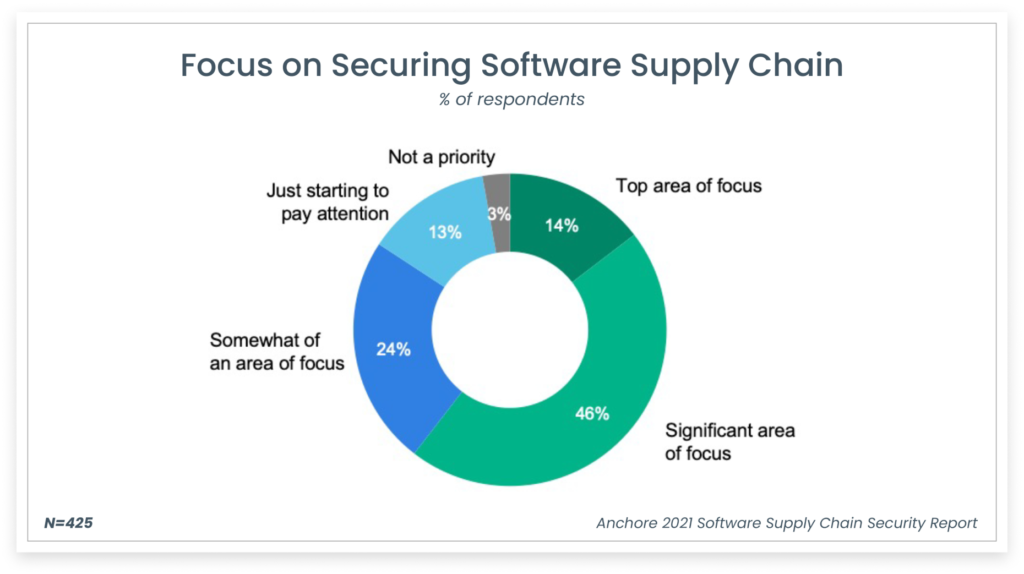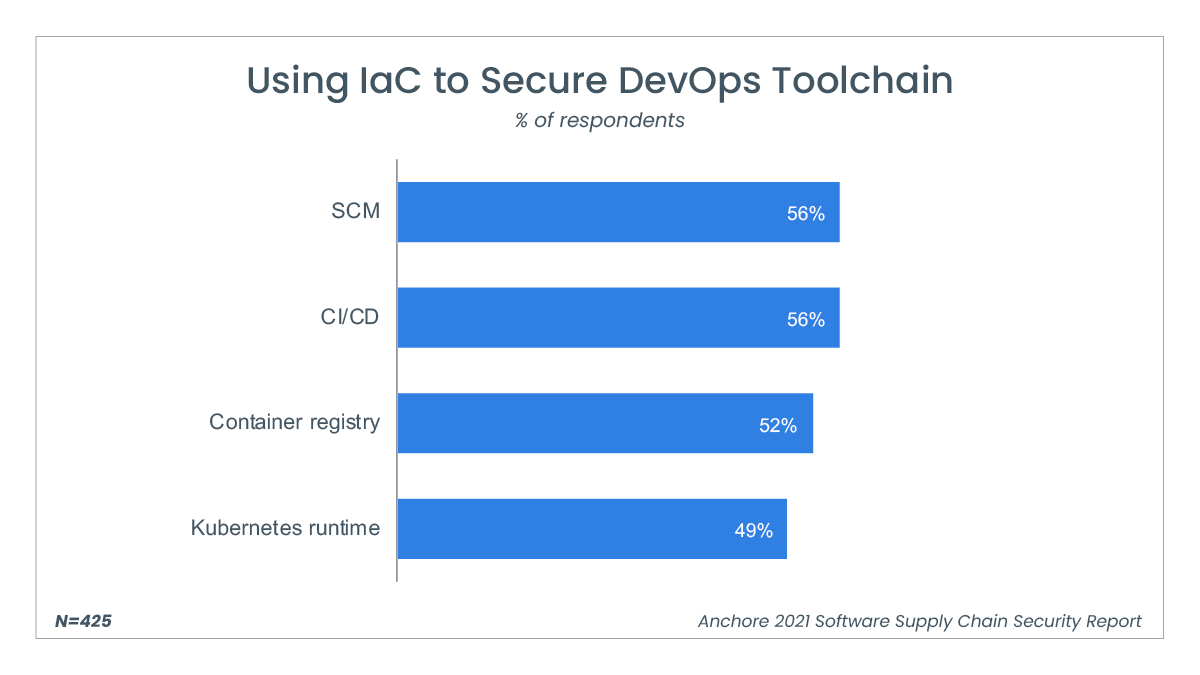The broad impact of software supply chain attacks is clear in the findings of our recent 2021 Anchore Supply Chain Security Report. As malicious actors continue to advance the threat landscape in creative and alarming ways, Anchore commissioned a survey of 400+ enterprises with at least 1,000 employees to find out how real the impact is.
A whopping 64% of respondents to our survey reported that a supply chain attack had affected them in the last year. Furthermore, a third of those respondents report that the impact on their organizations was moderate or significant.
Scanning Challenges Abound
Enterprises facing these supply chain attacks also have to work through container scanning challenges. 86% of respondents reported challenges in identifying vulnerabilities. Too many false positives are a challenge for 77% of the respondents. On average, respondents estimate that 44% of vulnerabilities found are false positives. Getting developers to spend time on remediating issues was a challenge for 77% of respondents.
Corporate and government agency moves to DevOps and DevSecOps mean collaboration among development, security, and operations teams is more important than ever before. 77% of organizations are designating Security Champions within Dev teams to facilitate tighter collaboration.

Enterprise Security Focus: The Software Supply Chain
Against a backdrop of recent high-profile software supply chain attacks, 46 percent of respondents indicated that they have a significant focus on securing the software supply chain while an additional 14 percent have prioritized it as a top focus.
Very few (3%) of the respondents showed that software supply chain security isn’t a priority at all.

The DevOps Toolchain: An Enterprise Blind Spot
Experts have identified development platforms and DevOps toolchains as a significant risk point for software supply chain security. When attackers compromise a toolchain or development platform, they gain access to all the different applications that move through your development pipeline. This opens the door for bad actors to insert malicious code or backdoors that can be exploited once the developer deploys the software in production or (even worse) shipped to customers.
A critical best practice is to leverage infrastructure-as-code (IaC) to secure each platform or tool in the development process to ensure they are secured properly. Just over half of respondents are using IaC to secure these various platforms.

Do you want more insights into container and software supply chain security? Download the Anchore 2021 Software Supply Chain Security Report!



